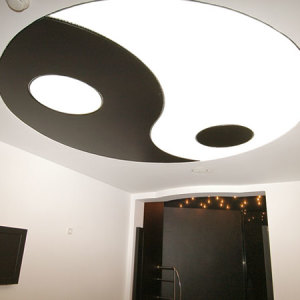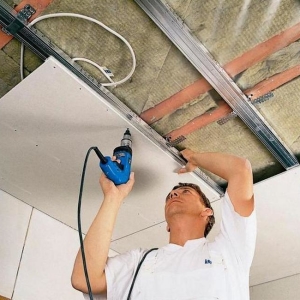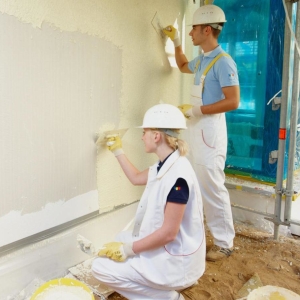Modern repair is almost impossible to imagine without plasterboard. It is durable, and, if necessary, enough plastic, is distinguished by environmental friendliness and multifunctionality. It is easy to install and durable, but only if it is right, under a specific room. What is the secret of the "right" plasterboard sheet?
The main difference in plasterboard is in its technical characteristics that determine certain properties. To date, there are 4 varieties of this building material:- The usual (GLC) is appropriate in most rooms where normal microclimate is supported. Differs in gray and blue marking.
- Waterproof (G CLEB) - applicable in case of high humidity, that is, in the kitchen or in the bathroom. It has hydrophobic components and silicone, which prevents the spread of fungus. This type is characterized by green color.
- Fire resistant (GKLO) - used with an excessive dry climate of the room or with a high probability of fire (ventilation mines, electric shields, attics, secrets). Due to the reinforcing additives, the material obtains excellent resistance to high temperature and even open fire. Traditionally paint in pink color, but you can find gray refractory drywall with red marking.
- Water and fire-resistant (G CLEBO) - selected for saunas and similar spaces, where high temperatures and humidity act on the internal surfaces at the same time. Visually is determined by green color in combination with red marking.
- The sheet is 6.5 mm is the thinnest, and therefore the most supplied with artistic deformations. It is taken to create arches and multi-level ceilings, where the plasticity and ease of material is important.
- The sheet 9.5 is suitable for a smooth ceiling and even for curvature at a small angle. It is characterized by a small weight and sufficient strength, due to which the people this type is called - ceiling plasterboard.
- The thickness is 12.5 mm is a classic option for walls. Although a single-level ceiling with him will also work out.
- HCL with a thickness of 14-24 mm is designed to form interroom partitions. It provides good noise insulation, withstands large loads, resistant to damage.

- PC, in the European version VR, KP is a rectangular edge. It has blocked edges, used for finishing without subsequent shtcloth.
- The Criminal Code, it is AK, Pro, KS (BA) - edges with a longitudinal bevel. Such plasterboard must be placed, while putting the seams with a reinforcing ribbon.
- ZK (RK), PLC (HRK) - edges Rounded. During their putty, the reinforcing tape is not needed. The same type includes the edges of the Pluk (HRAK), Vario, Kpos, however, they are sweeping both with a ribbon and without it.
- FC is a longitudinal folding edge. Often it can be found on dry-fiber sheets. Mounted with subsequent sticking of the sickle and putty.
Buying plasterboard, be sure to evaluate the microclimate of the room, the type of surface (ceiling or wall), the need for plasticity of the material (if it comes to figure bends). To determine the correct edge, consult with the master, since its type depends on specific construction tasks.


































